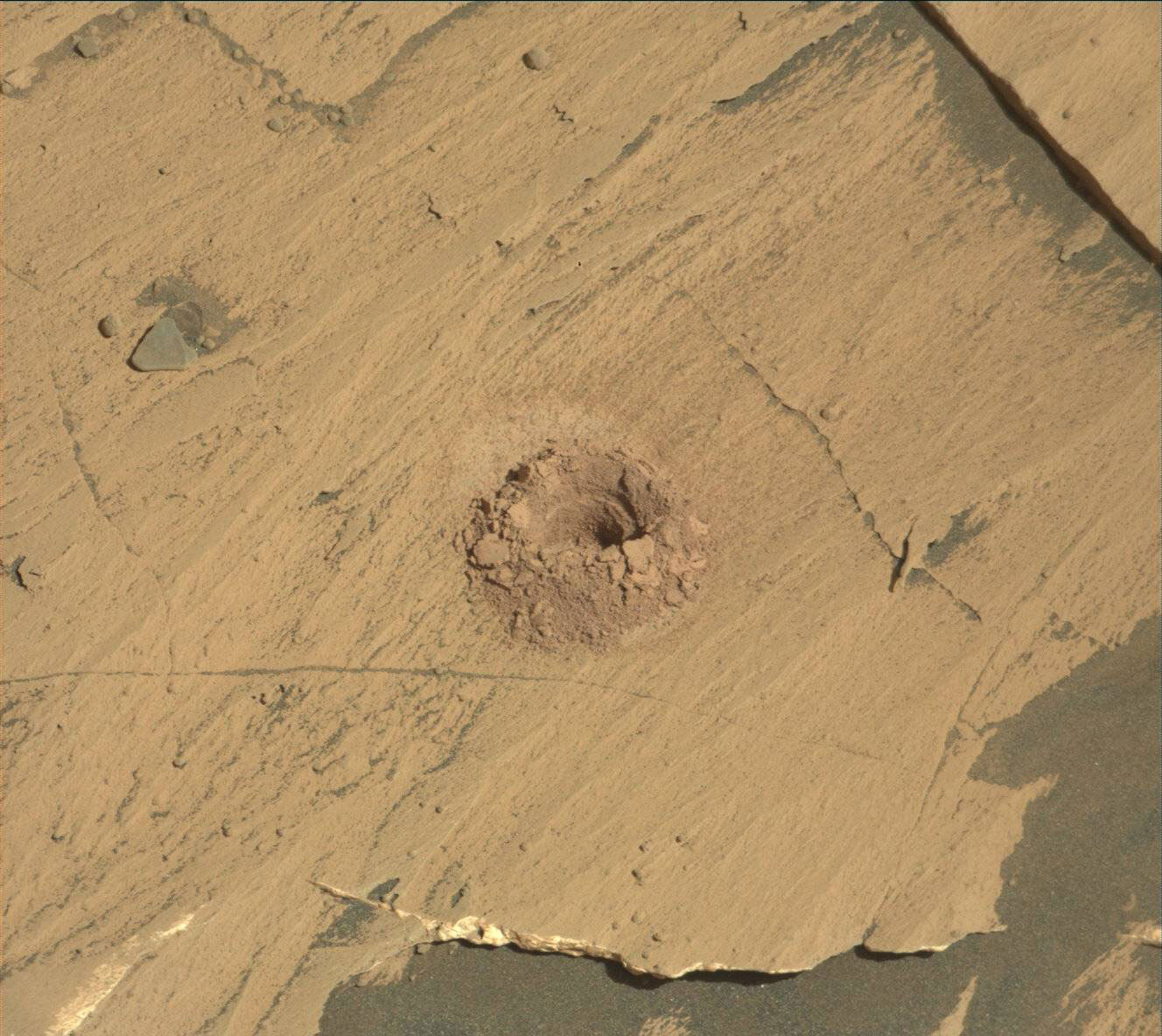2 min read

We did it! Yet another successful hole has been drilled in Mars! Welcome to the family, "Zechstein!"
Tosol, Curiosity is planning for a TON of cool science including a ChemCam vertical raster in our new drill hole (more about this below), CheMin analysis of the mineralogy of this drill sample, and several image mosaics! Mosaics are a common activity with our mission, and we have SO many cameras to plan them with! But this plan is pretty special because we have 7(!) image mosaics planned in addition to a dust devil survey.
Dust devil surveys are another common activity for our mission, but that doesn't mean they are unimportant. These surveys attempt to capture the formation of dust devils in Gale crater. These are some of the coolest products from our mission to look at because they are shots of Mars in action!
Tosol's mosaics include a Navcam sky flats observation and two ChemCam long distance mosaics of Rafael Navarro mountain and the pediment above us. We also have four mosaics from Mastcam, two large mosaics of the "Rafael Navarro Foothills" and "Maria Gordon Notch," and two smaller mosaics on targets "Loth" and "Reawick."
ChemCam is also taking LIBS chemistry measurements of two targets including "Comet Stone," which is a pebble thought to be from the Stimson formation above the rover, and a vertical raster inside our new drill hole, "Zechstein." I love these vertical ChemCam rasters in drill holes because they let us see the changing chemistry as a function of depth below the surface. A rare opportunity to better understand the unexposed subsurface rocks!
In addition to all of the great science activities above, we are delivering a sample of our newly drilled material to CheMin, which will provide us with detailed mineralogy of this site. And DAN, REMS, and RAD will also have their standard monitoring activities.
Written by Sean Czarnecki, Planetary Geologist at Arizona State University







